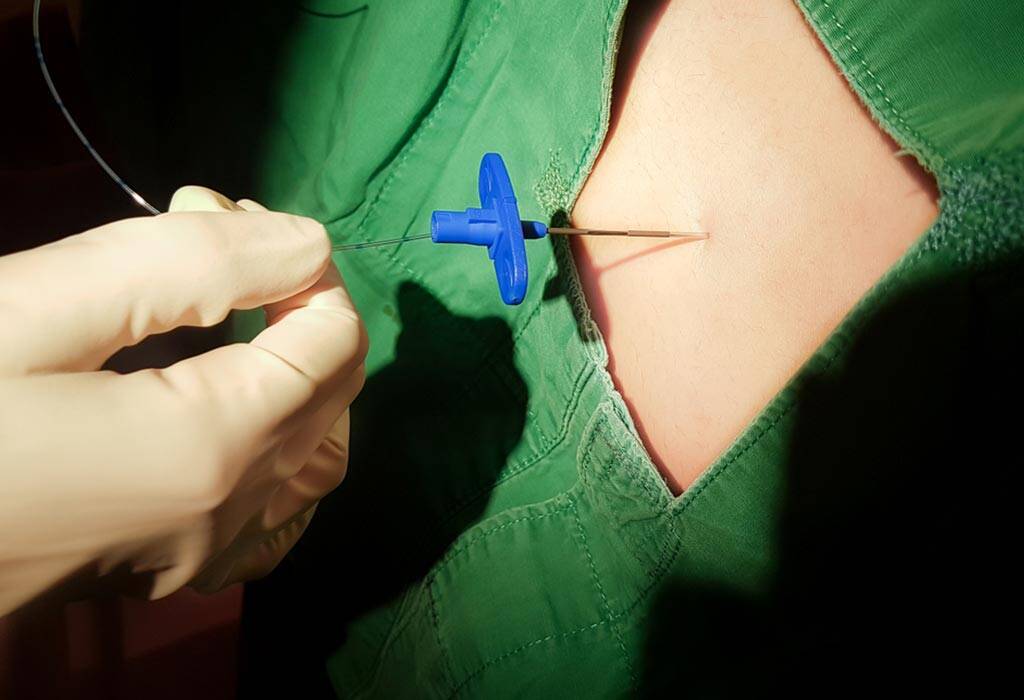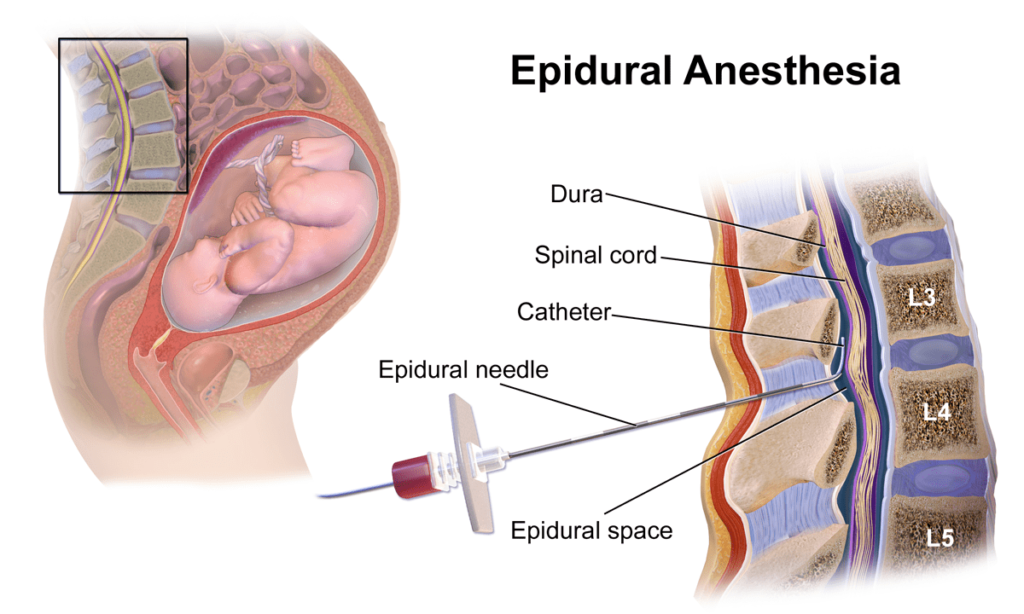Painless Delivery - Epidural Analgesia for Labor

What is Painless Delivery?
The process of a painless delivery is the same as a normal delivery, save for receiving the epidural to almost eliminate labor pains. But, as a mother to be, every woman wants to make sure each and everything is in order when planning for the birth of her baby, so here is the process of painless delivery explained.
After the active labour starts and prior to the administration of the epidural, the mother will be given IV fluids; about 1 – 2 litres of fluids will be given throughout labour and delivery.
Before administering the epidural, an anaesthetist will ask you to take a comfortable position which will make it easier to inject the right place and increase the effectiveness.
After cleaning with an antiseptic, a small amount of a local anaesthetic will be injected into your lower back to numb the area and a catheter will be threaded through the needle into the epidural space (the area between the bones of the spine and around the spinal nerves).
The epidural injection will take around 5 to 30 minutes to take full effect.
Advantages:
Women can go for a normal delivery sans pain and and they’ll be conscious during the procedure:
» Labour pain induces the secretion of stress hormones in the mother that distress both mother and child. This will not be so in painless deliveries.
» The duration of the delivery is significantly decreased.
» Blood pressure, pulse rate and heartbeat are kept under control.
» It is easier to do a c-section if needed as an emergency.
» Painless delivery gives women a chance at experiencing natural childbirth, with very little intervention. It has helped in bringing down the number of elective C-sections in India.
» Women are given an option to take an epidural during labour if they feel they are not able to bear the pain, are exhausted from pushing or in case of any emergencies that may require an urgent C-section.
» By alleviating pain, it allows the mother to focus on the delivery. It is an aid for relaxation and can prevent exhaustion and irritation experienced by most women during childbirth, thereby reducing the risk of developing post-partum complications.
» It helps the baby descend easily by relaxing the pelvic and vaginal muscles.
» It also helps in lowering the blood pressure of the mother, which otherwise can shoot up to dangerous levels during labour.
Disadvantages:
» In very rare cases, there can be sudden and unexpected drops in blood pressure.
» Epidurals can cause some backaches, dizziness or shivering.
» Mothers may experience headaches after the procedure.
» Urination might be difficult for a while.
» Because of the numbness, the normal pushing ability of woman during labour is lesser. So a vacuum may be used for pulling out the baby or the surgeon may opt to perform a c-section.
» The labour may take longer than otherwise when an epidural is used.
» The mother may have trouble passing urine after childbirth. In that case, a catheter may be used.
» It causes numbness of the entire lower body, and it may be a while before you can walk.
» In stray cases, if the mother’s blood pressure goes down, it may cause a lowering of heart rate in the baby as well. In extreme cases, an emergency C-section may be performed.
Contact us before assessing what is for you and your baby to be.

What is Epidural Anaesthesia?
An epidural refers to the use of an injection for pain relief during labor.
An anesthesiologist gives an injection in the lower back and places a plastic tube through which drugs are released around your spinal cord.
The injection is given only once you’re in active labour – that is when you’re having at least 3 contractions in 10 minutes.
Is Epidural Really Painless?
“Epidural substantially reduces pain and sensations in the lower half of the body, but doesn’t always provide 100% pain relief,”.
Is an Epidural Injection Safe?
“Epidurals are safe for the mother and baby.”
Are there any other options for painless delivery?
Yes! If you are keen on a normal birth with the least medical interventions, you could explore two methods which help in achieving nearly painless labour.
These are:
This is a combination of gases that is breathed in through a mask, and can be used by all pregnant women. It acts within seconds and can be self-administered under the supervision of a trained nurse.
Some expecting women may be offered the option of labouring in a pool of warm water, which is known to have a calming effect. You will be assisted by trained nurses to position yourself in a way that is most relaxing.

